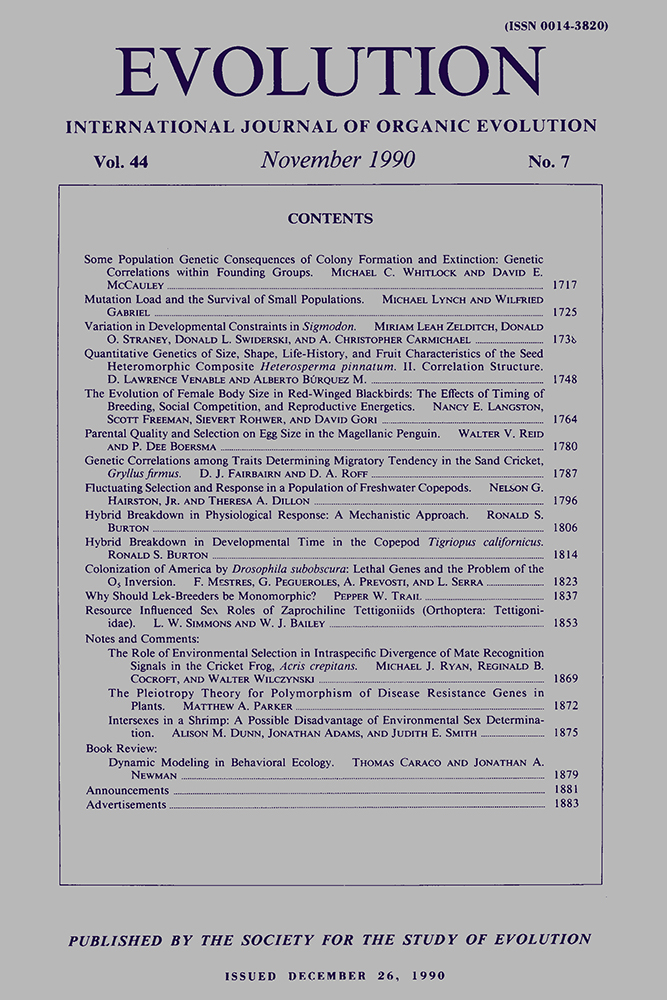HYBRID BREAKDOWN IN PHYSIOLOGICAL RESPONSE: A MECHANISTIC APPROACH
Abstract
Data comparing the physiological response to hyperosmotic stress in individual copepods (Tigriopus californicus) from natural populations and laboratory hybrids are presented. While individuals from two genetically differentiated natural populations and F1 interpopulation hybrids showed only minor differences in patterns of free amino acid (FAA) accumulation during hyperosmotic stress, patterns of FAA synthesis were highly variable among the F2 hybrids. Isofemale lines initiated from later hybrid generations (F7-F10) exhibited substantial inter-line variance in FAA accumulation. This increased variance in physiological response appears unrelated to allozyme polymorphisms at two loci encoding FAA-metabolizing enzymes and appears to result from other, unidentified polymorphisms in the proline synthetic pathway.




